
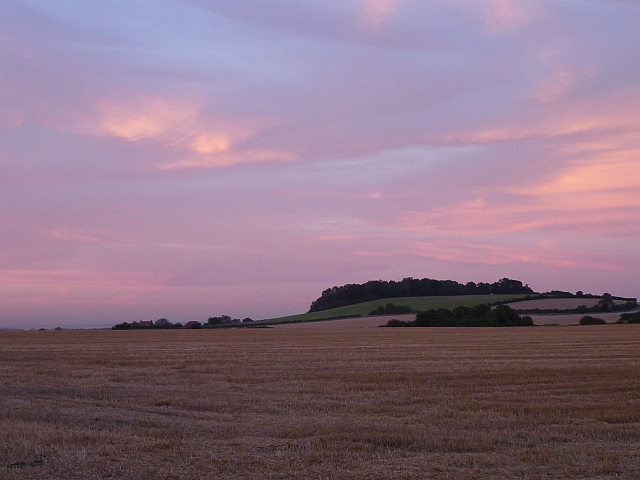
Loveden Hill
Wapentake. Loveden Hill is at the centre of Loveden Wapentake (the Danelaw equivalent to the "Hundred" in Anglo-Saxon England). The court is likely to have met monthly at Loveden Hill. The word Wapentake means "show your weapon". The idea was that all in favour of a resolution would raise their sword etc. to show agreement.
Roman Remains. Part of a column from a Romano-British building was found in the Anglo Saxon cemetery. A larger roman site has been identified nearby at Hough on the Hill.
Sixth century Anglo Saxon cremation urn decorared with crosses and runes, found at Loveden Hill
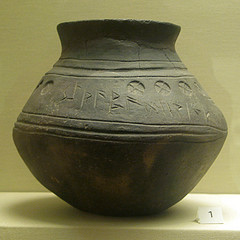
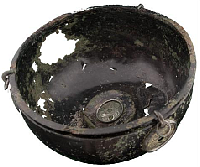
Seventh century Anglo Saxon hanging bowl
Anglo Saxon Cemetery. Loveden Hill is the site of an extensive Anglo-Saxon cemetery, featuring both inhumations and cremations. It is one of the largest such sites in England, suggesting that the site was important to the Anglo Saxons. It has been suggested that the ancient British (pre roman) kingdom of Lindsey lost the land south of Lincoln to Kesteven when it was seized by a group of Angles based around Loveden Hill.
Initial excavations in the 1920s in and around a barrow found 45 urns, part of a major cremation cemetery.
Excavations between 1955 and 1963 another 500 urned cremations, 2 cremations in cists, and groups of inhumations, possibly originally interred in or beneath barrows.
In 1972, further excavations identified 1245 cremations and 32 inhumations. Grave goods and other finds include glass claw beakers, a Coptic bowl, bronze hanging bowls and buckets, ornaments, and pottery.
The site is exceptionally rich in grave goods. Bronze and iron implements, bronze hanging bowls and bucket, ornaments, toilet implements, glass, including beads, etc. Anglian, Frisian and Saxon styles of pottery are represented, Anglian predominating. It seems
likely that the Angles formed the early leaders of the settlement. Decoration on the hanging bowls, etc, and the pottery indicates that the cemetery was in use from the middle of the 5th century at the very latest, till the late 7th century. One pot and a fragment of a
second suggest that runic writing was known. One urn has a long runic inscription which has not yet been interpreted.
Many of the finds are in The Collection - Lincoln’s Art & Archaeology Museum (free entry)
Oher finds are in the British Museum, as well as museums at Grantham, Newark, Nottingham and Scunthorpe.
Images of Loveden Hill. Although no higher than the escarpment it adjoins, Loveden Hill is quite prominent from the escarpment and it’s easy to see why the Anglo Saxons considered this a significant spot. The floor of the Trent Valley affords unspoilt views in all directions, with the eye being drawn to the only significant features that break the skyline - the church spires, Belvoir Castle, Lincoln Cathedral and the wood-capped presence of Loveden Hill.

Loveden Hill from the north (before the skyline was interupted by the wind turbine at Frinkley Farm)

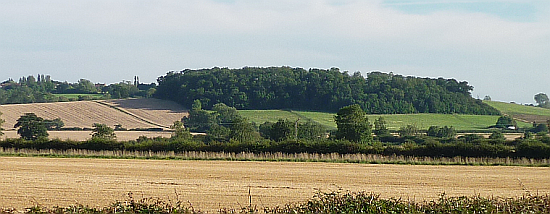
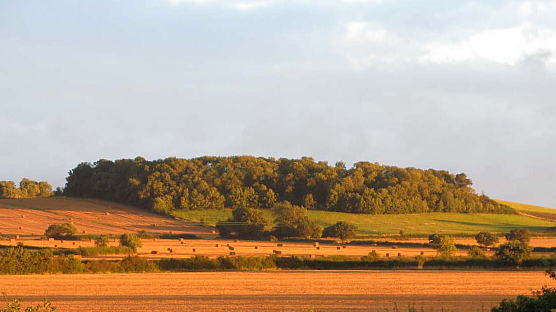

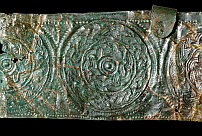
Bucket Mount (The Collection)
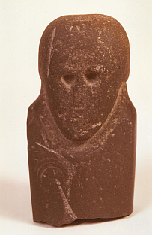
Sceptre Terminal
(The Collection)
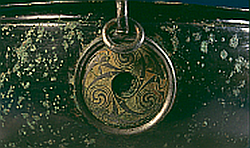
Escutcheon (The Collection)
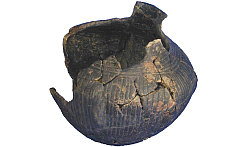
Window Urn (burial urn with section of roman glass in the base)
(The Collection)
| reVOLT |
| Carlton Scroop Turbines |
| Frinkley Farm |
| Green Lane |
| Fulbeck Airfield |
| MPs |
| Brandon History |
| Brandon Houses |
| Hough History |
| Gelston History |
| Landowners |
| Laurel & Hardy |
| Hall Lane |
| Brandon Hall |
| Greystones |
| Gelston Grange |
| Brandon Lodge Farm |
| Other Farms |
| Church Lane Farm |
| Brandon South |
| Church Lane North |
| Old Hall |
| Hall Road |
| Ironstone |
| Old Hall Farm - 1 |
| Old Hall Farm - 2 |
| Pubs & Shops |
| Adverts |
| Local Democracy |
| NP Documents |
| NP Development |
| Loveden Hill |